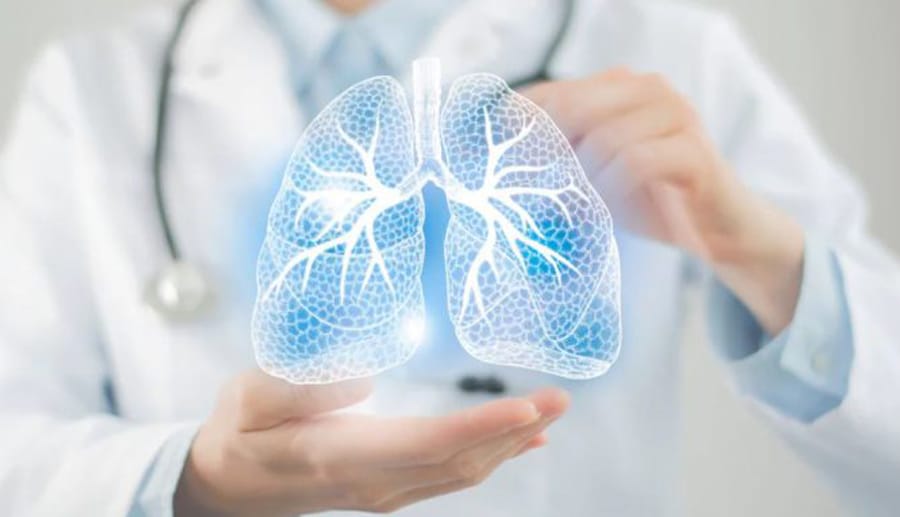Your lungs are a window into your overall health, constantly working to filter the air you breathe while being exposed to a myriad of pollutants and allergens. Over time, this exposure, combined with the natural aging process, can take a toll on these vital organs. A new study by an international team of respiratory experts, based on decades of data, found that human lung function typically peaks in our early to mid-20s before beginning a gradual decline. Factors like smoking, air pollution, and pre-existing conditions can all accelerate this process. But it’s not just about your lungs; the health of your respiratory system is surprisingly connected to many other aspects of your body’s aging process, including your immune system, metabolic health, and even your cognitive function. The good news is that you don’t need expensive equipment to get a basic sense of your lung capacity. There is a simple, at-home test you can perform using just a plastic bottle, a bucket of water, and some rubber tubing. This test measures your Forced Vital Capacity (FVC), which is the volume of air you can breathe out after taking a deep breath. While it’s not a medical-grade test, it can give you a general idea of your lung’s vital capacity, which is a key indicator of respiratory health. A normal, healthy FVC is typically between three and five liters. For a deeper understanding of respiratory health, you can visit the American Lung Association at https://www.lung.org/.
The Interconnectedness of Lung and Systemic Health
The health of your lungs is far more interconnected with your overall well-being than you might think. As you age, your lung tissue naturally loses elasticity, your respiratory muscles weaken, and your rib cage becomes less flexible. If this decline is excessive, it can lead to chronic obstructive pulmonary disease (COPD), a serious condition. Beyond respiratory issues, declining lung function is also linked to a wide range of other age-related illnesses, including high blood pressure, metabolic diseases, and even cognitive decline. The reason for this connection lies in what scientists call the “lung-immune axis.” The lungs contain millions of immune cells that are responsible for clearing pollutants and fighting infections. When these cells are overwhelmed, they can trigger inflammation that not only harms the lungs but also spreads throughout the body. This systemic inflammation is believed to be a major contributor to many age-related health problems, including heart disease and a reduction in memory. Maintaining healthy lungs is therefore a crucial step in promoting graceful aging and staying disease-free for longer. To learn more about the human body and its systems, the National Institutes of Health (NIH) website at https://www.nih.gov/ provides a wealth of information.
Improving Your Lung Function: From Exercise to Breathing Devices
The good news is that while lung function naturally declines with age, there are proactive steps you can take to mitigate this process and even improve your lung health. Regular exercise is one of the most effective ways to reduce airway inflammation and strengthen your breathing muscles. Your diet also plays a role; reducing salt intake and incorporating foods rich in antioxidants and vitamins C and E can help protect the walls of your lungs from damage. Quitting smoking and vaping is, of course, a critical step to prevent further harm from inflammatory chemicals. Additionally, maintaining a healthy weight can help, as excess abdominal fat can restrict your lungs’ ability to fully expand. Beyond these lifestyle changes, there are more targeted methods to improve lung function, such as Inspiratory Muscle Training (IMT). This involves using a device that provides resistance as you inhale, acting like weightlifting for your diaphragm and other respiratory muscles. Regular IMT sessions have been shown to improve breathing strength, increase exercise capacity, and even lower blood pressure. For more on the benefits of exercise and healthy living, the World Health Organization (WHO) at https://www.who.int/ is a great resource. Another interesting approach is to take up singing or playing a wind instrument. These activities naturally train your respiratory muscles to be more flexible and controlled, which can help improve overall lung function. While singing can’t reverse existing lung damage, it can help you get the most out of your remaining lung capacity. To find out more about how music can impact health, you can check out the Music and Health Research Collaboratory at https://musicandhealth.ca/. Taking care of your lungs is an investment in your entire body’s future health.







